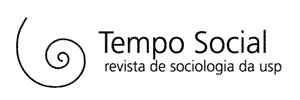Resumos
A figura do herói-trickster tem sido investigada pelos antropólogos e pelos estudiosos da mitologia universal. Personagem polêmico por natureza, ambíguo e contraditório, o trickster vem sendo encontrado tanto nos relatos míticos das sociedades indígenas quanto na produção literária e folclórica e das formações sociais complexas. Desta forma, o trickster constitui uma categoria bastante ampla, e os problemas interpretativos daí decorrentes espicaçam a curiosidade dos antropólogos.
trickster ; mito; mitologia; herói-civilizador; antropologia do imaginário
The trickster hero has been a constant subject of investigation for anthropologists and specialists in universal mythology. An ambiguous and contradictory figure, polemical by its very nature, the tricksters can be found both in mythological narratives of tribal societies and in the folk literary production of complex social formations. Thus the trickster encompasses a fairly large category of imaginary entities and the problems of interpretation arising thereof are of permanent concern to the anthropologist’s curiosity.
Trickster; myth; mythology; mythology; civilizing hero; anthropology of imaginary entities
Texto completo disponível em PDF.
-
*
Este artigo constitui uma versão revista e ampliada do capítulo "O Trickster", parte do livro " Um mito bem brasileiro: estudo antropológico sobre o Saci ". São Paulo, Editora Polis, 1987.
REFERÊNCIAS BIBLIOGRÁFICAS
- ABRAMS, David & SUTTON-SMITH, Brian. The development of the trickster in children’s narratives.Journal of American Folklore90 (355), 1977.
- BALANDIER, Georges. O poder em cena . Brasília Editora da Universidade de Brasília, 1982.
- BASTIDE, Roger.El prójimo e el estraño . Buenos Aires, Amorrortu Editores, 1973.
- BEIDELMAN, T.O. The moral imagination of the kaguru: some thoughts on trickster, translation and comparative analysis. American Ethnologist . 7(1), 1980.
- CANDIDO, Antonio. A dialética da malandragem . Revista do Instituto de Estudos Brasileiros da Universidade de São Paulo . São Paulo, 8, 1970.
- CARROL, Michael. Levi-Strauss, Freud and the trickster: a new perspective upon an old problem.American Ethnologist 8(2), 1981.
- FREUD, Sigmund. Totem y tabu. Madrid, Alianza Editorial, 1975.
- HOLANDA, Sérgio Buarque de. Índios e mamelucos na expansão territorial paulista.Anais do Museu Paulista , São Paulo, Impresa Oficial do Estado, 1949.
- JUNG, Carl G. Contribution à l’étude de la psychologie du fripon. In: RADIN, Paul et al. Le fripon divin: un mythe indien Genève, 1984.
- KERÉNYI, Charles. Le mythe du fripon et la mythologie grecque. In: RADIN, Paul et al. Le fripon divin: un mythe indien Genève, 1984.
- KOCH-GRÜNBERG, Theodor. Mitos e lendas dos índios Taulipang e Arekuna. Revista do Museu Paulista . São Paulo, 7, 1953.
- KOEPPING, Klaus-Peter. Absurdity and hidden truth: cunning intelligence and grotesque body immages as manifestation of the trickster. History of Religions, 24(3), 1985.
- LÉVI-STRAUSS, Claude. Antropologia estrutural Rio de Janeiro, Tempo Brasileiro, 1970.
- LOWIE, Robert. The hero-trickster discussion. Journal of American Folklore 22, 1909.
- MAKARIUS, Laura. Le mithe du trickster. Revue de l’Histoire des Religions Paris, Presses Universitaires de France, 175 (1), 1969.
- _______. Le sacré et la violation des interdits. Paris, Payot, 1974.
- QUEIROZ, Renato da Silva. Um mito bem brasileiro: estudo antropológico sobre o Saci São Paulo, Polis, 1987.
- RADIN, Paul. Les winnebagos et leur cycle du fripon. In: RADIN, Paul et al. Le fripon divin: un mythe indien Genéve, 1984.
- SCHADEN, Egon. A mitologia heróica de tribos indígenas do Brasil: ensaio etno-sociológico Rio de Janeiro, Ministério da Educação e Cultura, 1959.
- SETZER, Rachel. Fairly tales as metaphors of society: an analysis of Brazilian narratives Purdue, 1982. Thesys (Master). Purdue University.
- TRINDADE, Liana Salvia.Exu: símbolo e função São Paulo, 1979. Tese (Doutoramento). Faculdade de Filosofia, Letras e Ciências Humanas da Universidade de São Paulo.
- TURNER, Victor. Trickster tales. In: TURNER, Victor. Myth and symbol Encyclopaedia of the social sciences. New York, The Macmillan Co./The Free Press; London, Collier-Macmillan Publishers, 1972.
- WESCOTT, Joan. The sculpture and myths of Eshu-Elegba, the yoruba trickster.Africa London, 32, 1962.
- WORSLEY, Peter.Elle sonnera la trompette: le culte du cargo en Melanésie Paris, Payot, 1977.
Datas de Publicação
-
Publicação nesta coleção
Jan-Dec 1991
Histórico
-
Recebido
Dez 1990

